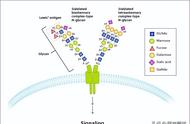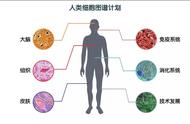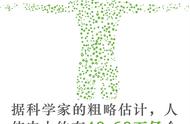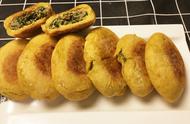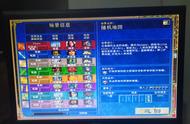Today, we are going to talk about cells in terms of Biology.
今天,我们将讨论生物学中千变万化细胞。
So, first, most might be wondering: what are cells?
那么,迎面而来的第一个问题就是:什么是细胞?
Well, cells are the basic building blocks of everything in our bodies, somewhat like how atoms are the building blocks of everything.
In biology, there are two major kinds of cells: Animal cells and Plant cells.
Now, let's talk about both kinds of these cells, one by one. We need to envision cells as a factory each. The following three points are what cells do:
1. Take, process and release ATP energy into the human body for use.
2. Destroy unnecessary materials and digest them (Used by enzymes)
3. Create copies of genetic information for other use (DNA)
(This is like the product of the factory!)
细胞是我们体内万物的基本组成元素,就像原子是万物的基本组成元素是一样的道理。
在生物学中细胞这个大家族大致分为两类:动物细胞和植物细胞。
现在,让我们来详细的讲讲这两个属于细胞的世界。我们需要将每个细胞都设想为一个迷你的工厂,细胞的作用大致分为三类,分别是:
吸收ATP能量,进行处理,然后将这些能量引入到体内供我们使用。
销毁不必要的、对人体有害的物质并进行消化。
创建人体基因DNA的副本,并建立遗传基因。
In average, an animal cell grows roughly 0.01 millimeters, so they cannot be seen by the naked eye. Most scientists use a microscope to see cells. Microscopes are machines dedicated to seeing things that are millions of times smaller.
Here is a picture of a typical animal cell, found in Eukaryotes (multicellular bodies):
动物细胞大约仅有0.01毫米,因此肉眼根本无法看到他们,需要借助器械帮助才可以看到他们的外观
这是典型的动物细胞的图片:

Now, I am going to go over the main parts of the cellular body.
现在我将会介绍一下细胞的主体部分
Cell Membranes:
The cell membrane is like the fence and the gate of the cell. The cell Membrane protects the cells from bad things such as viruses. It also lets water, minerals, oxygen, and other forms of necessary energy into the cell. It also holds the cell together so that the inner parts won't break out. It offers protection to the cell, in other words.
细胞膜:
细胞膜就像栅栏和细胞的门一样,细胞膜可保护细胞免受病毒等有害物质的侵害,它还可以使水,矿物质,氧气和其他形式的能量进入细胞。它还可以将细胞固定在一起,以免内部结构发生破裂。
Nucleus:
Inside the center of the Membrane, this looks like another membrane has housed an odd-looking ball: The Nuclear Membrane, the Nucleus and the nucleolus (literately in the Neuclear membrane and the Nucleus!). The Nucleus is like the headquarters of the cell factory. It is where the cell's Chromosomes, or the genetic code takes place. The Genetic codes are strands of DNA, which are like the blueprints of the factory. Without it, the factory would not be able to function. This is where most viruses, like the invaders of a cell try to tackle and hijack so they could change the code of the production to create and reproduce more viruses that would do the process all again. .
The Nucleus could be separated into 2 other parts:
The Nuclear Membrane:
The Nuclear Membrane is a protective layer that surrounds the nucleus so that the number of minerals and others that are going in and out are controlled and strictly monotired to make sure that no viruses and unwanted materials are transferred in. This is sort of like the security system of the Headquarters.
Nucleolus:
The nucleolus is a small structure inside the nucleus that creates ribosomes (Protein makers) and transports them to the Cytoplasm, the substance that is in the cell where there is no inner parts take place.
核:
核心就像细胞工厂的总部。它是细胞的染色体或和遗传密码的所在地,遗传密码是一条DNA链,如同工厂的蓝图核心一样。没有它,工厂将无法运行,整个瘫痪。这是大多数病毒(例如侵略我们身体防御组织的病毒细胞)试图解决和劫持的地方,以便它们可以使我们感染病毒、呈现病态。
核可以分为其他两个部分:核膜和核仁
核膜:
核膜是围绕核的保护层,因此可以控制矿物的数量以及进出矿物的数量。这有点像总部的安全。
核仁:
核仁是细胞核内的一个小结构,可形成核糖体(可制造蛋白质)并将其转运至细胞质。
Cytoplasm:
The cytoplasm is inside the cell wall. It is the space where there are no inner parts, and all of the inner parts are in it. It contains cytoskeletons, which are thin tubes that transport the proteins into the parts of the cell (Like transporting the product of one phase of production into the other factory to be further completed.)
细胞质:
细胞质在细胞壁内,它是一个没有内部结构的空间,因为所有内部物质都在其中。细胞质的骨架是细管,细管将蛋白质运输到细胞的各个部分(就像将一个生产阶段的产品运输到另一个工厂一样完成)。
Ribosomes
The Ribosomes are inside the nucleus (see 'Neucleus'). It produces proteins by the DNA stored in them to function the cell. It is where the final products are created, and almost any major change in the cell takes place there.
核糖体
核内的核糖体(见“核仁”)。它通过存储在其中的DNA产生蛋白质,从而使细胞发挥作用,以产品为例,这里就是产品的最后一关,几乎所有的主要更改都在此进行。
Lysosome
These are the trash facilities for the cell. This is like the Chimney of the factory. These are filled with destructive enzymes that breaks down the unwanted substances and materials. In other words, the lysosome is where all of the waste of other parts end up.
溶酶体
这里是一个如同工厂的烟囱、垃圾处理站的空间,这里充满了对身体有破坏性的酶,可以分解不需要的物质以及废料。
Endoplasmic reticulum
The endoplasmic Reticulum is the transport facility in the cell. These are tubes that transport fat and oils (Energy) through the cell to other parts.
内质网
内质网是细胞内的“运输车“,是将脂肪和油输送通过细胞的软管。
Mitochondrion
The Mitochondrion or the Mitochondria is where all of the energy is generated. It is where a chemical reaction happens with oxygen and glucose happens, and is where energy in another form is taken to other parts of the cell.
线粒体
线粒体是产生所有能量的地方,也就是氧气和葡萄糖发生化学反应的地方,也是能量以另一种形式被带到细胞其他部位的地方。
Golgi apparatus:
Here is the packaging facility of the cell. Here, proteins and newly made materials are packaged to go to other places of the cell and outside.
高尔基体:
在这里,蛋白质和新制造的养料被输送到细胞的其他地方和细胞外。
What about plant cells? Well, they are pretty similar to animal cells, just that they have these 2 parts that make them different.
其实植物细胞异曲同工,但它也同样有几点不同。
Cell Wall:
Cell walls are special to plants, and are rarely found on animals (This we'd all be hard if this were to appear). They are long threads of fiber that allow water and other materials through. They maintain a strict cell shape, and if animals were to inherit it, then all animals would not be able to move!
细胞壁:
细胞壁是植物特有的,很少在动物身上发现。它们是纤维的长线,可让水和其他材料通过,它们将永久保持细胞形状,只有在所有动物都将无法移动的情况下,动物才能继承它的形状,不可思议吧!
Vacuoles:
Vacuoles are also found in animals, but in plants they are huge, and could take up most of the space. The primary use for these vaculoes are to store energy, which is essential for plants, who don't have an even eating table and especially for the plants that live in the desert because they get water much less often.
空泡:
在动物中也发现了空泡,但在植物中空泡很大,可以占据植物本体的大部分空间。这些空泡的主要用途是存储能量,这对于尤其是没有均匀营养摄入的植物生活在沙漠中的植物至关重要,因为它们不能经常“喝水”。
Summary
All in all, cells are just magnificent. Some might think that these magnificent objects only appear in parts of the body, but remember, they make up literatly everything in your body.
总而言之,细胞只是宏伟的。有些人可能认为这些细胞仅出现在身体的某些部位,但请记住,它们做的远不止这些,它们实际上构成了身体中所有的一切。
在生物细胞学研究中,有时需要体外培养和分析癌细胞。细胞要养好,就要用好血清,
如Ausbian®特级进口胎牛血清,它的内毒素小于3Eu/ml,使细胞更健康,客户做实验更加顺利。

文章来源于:简单的历史
本文所用图片及内容均来源于网络收集整理,仅供学习交流,版权归原作者所有,并不代表我站观点。本站将不承担任何法律责任,如果有侵犯到您的权利,请及时联系我们删除。
,
